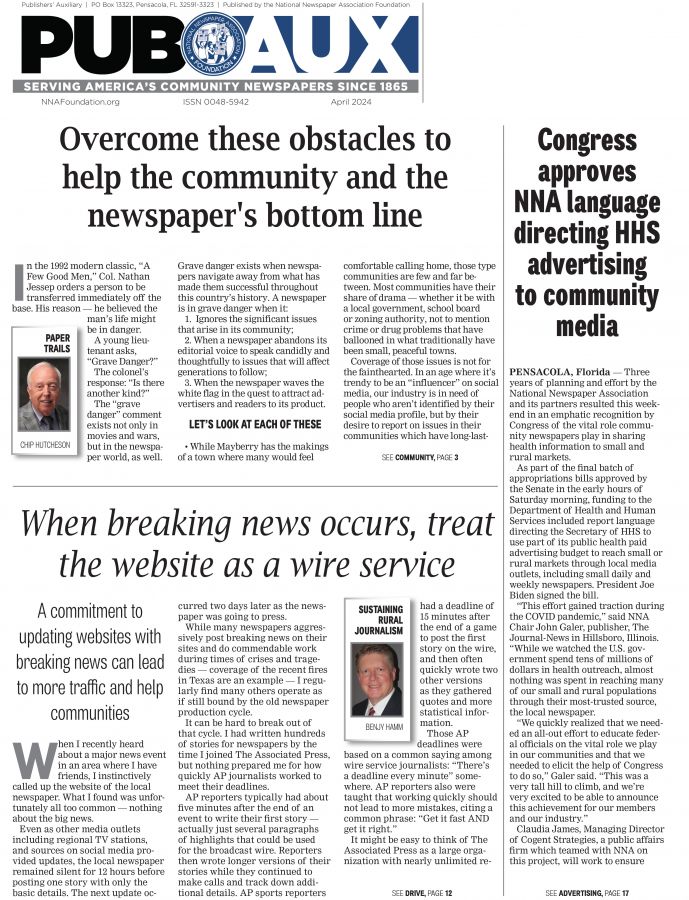Debate over 'blue collar' free speech and union dues
Jan 15, 2016
By Gene Policinski
Inside the First Amendment
In the Bill of Rights, the First Amendment's "blue collar" freedoms lead off all the rest.
Those five freedoms — religion, speech, press, assembly and petition — are what most Americans "go to work" with every day. We employ those core rights daily, from the comments we post fearlessly on the Web on virtually any subject, in the political and social associations we proclaim in every Facebook post, the office political debates we join in openly, and in the diversity of religious faiths that a majority of us still choose to adopt.
So it's more than a bit ironic that the U.S. Supreme Court started off the new year with a case involving public employee union membership dues that is viewed by some as the greatest threat in 40 years to the everyday political power wielded for more than a century by these collective blue collar — and increasingly white collar — worker groups.
The immediate issue before the court has to do with whether a public employee, non-union member still must pay a "fair share" of dues to the union that negotiates wages and benefits that all workers enjoy.
In a decision in 1977, the U.S. Supreme Court approved a system that recognizes such collective bargaining benefits accrue to all workers — but which permitted any individuals to avoid paying a portion of dues to be used for political activities, so that Democrats were not compelled to pay to subsidize campaign support for Republicans and vice versa.
The challenge the court heard on Jan. 11 was raised by 10 conservative California teachers who argued that even having to pay dues in support of collective bargaining against their will was a violation of their First Amendment free speech rights — advancing the idea that having the right to speak also must include the right not to speak.
While some say a decision in favor of the 10 teachers will have limited impact — noting some 25 states already forbid such "agency" payments by all — others claim throwing out the current system would be an intended body blow to public sector unions using the First Amendment argument as a ruse.
The latter claim is bolstered by statistics about union membership. Nationwide, according to the U.S. Bureau of Labor Statistics, "in 2013 there were 14.5 million members in the U.S., compared with 17.7 million in 1983. In 2013, the percentage of workers belonging to a union was 11.3%, compared to 20.1% in 1983. The rate for the private sector was 6.7%, and for the public sector 35.3%."
The numbers also tilt higher for public sector unions in a number of states considered Democratic strongholds — which, advocates of the present system say, makes the challenge on free speech grounds even more suspect. Cutting public employee unions' access to fees from all workers will weaken — if not destroy — such unions as a powerful political force, say critics of the California challenge.
A ruling to toss the current system would "weaken our ability at the bargaining table and on the job, [our ability] to advocate for us and for the community," Stephen Mittons, a local president of the American Federation of State, County and Municipal Employees, in Chicago, said in a Huffington Post report. "By decreasing the numbers even slightly, it does add to our vulnerability."
Advocates for the status quo see a larger pattern: Court opinions that are positioned as upholding First Amendment values and free speech for all, but which in reality clear a path for the wealthiest speakers. Most often cited is the court's 2010 ruling, Citizens United, which removed most limits for corporations and unions to support political campaigns and candidates, and which in critics' eyes opened a torrent of special interest spending supported by wealthy, mostly conservative, millionaires.
The apocalyptic view is that the pair of rulings will provide for more "speech" by those who can afford to pay, while lowering the chance that the funds supported by growing ranks public sector unions can offset such spending by companies or individuals.
One non-legislative or judicial First Amendment factor may be the relatively new — and unsettling of so much — presence of the Web, which can make a single voice or example during a political campaign shout out to the world, even as well-funded corporate or union Web campaigns fail to show results.
One mitigating factor for union advocates may be to recall that in the last presidential election season, despite billions spent by rich individuals, corporations and unions, a turning point may have been the viral posting of a surreptitious cell phone camera video of GOP nominee Mitt Romney criticizing "47 percent" of voters he termed irresponsible and overly dependent on government assistance.
Still, the concentration of large public employee unions in larger, key electoral states like New York and California — and the extent to which such unions tilt to Democratic candidates — puts a political tinge to the expected court action. And even in a political atmosphere increasingly dependent on social media and Web-based appeals, money still speaks — in organizing voter turnout and in media campaign advertising.
A fair assessment of the 2016 campaign thus far is that much is unexpected and non-traditional. We should know by the end of the court's current term, in June, whether a big chunk of money still will "speak" in the same old way in the future.
Gene Policinski is chief operating officer of the Newseum Institute and senior vice president of the Institute’s First Amendment Center. He can be reached at gpolicinski@newseum.org. Follow him on Twitter: @genefac.







